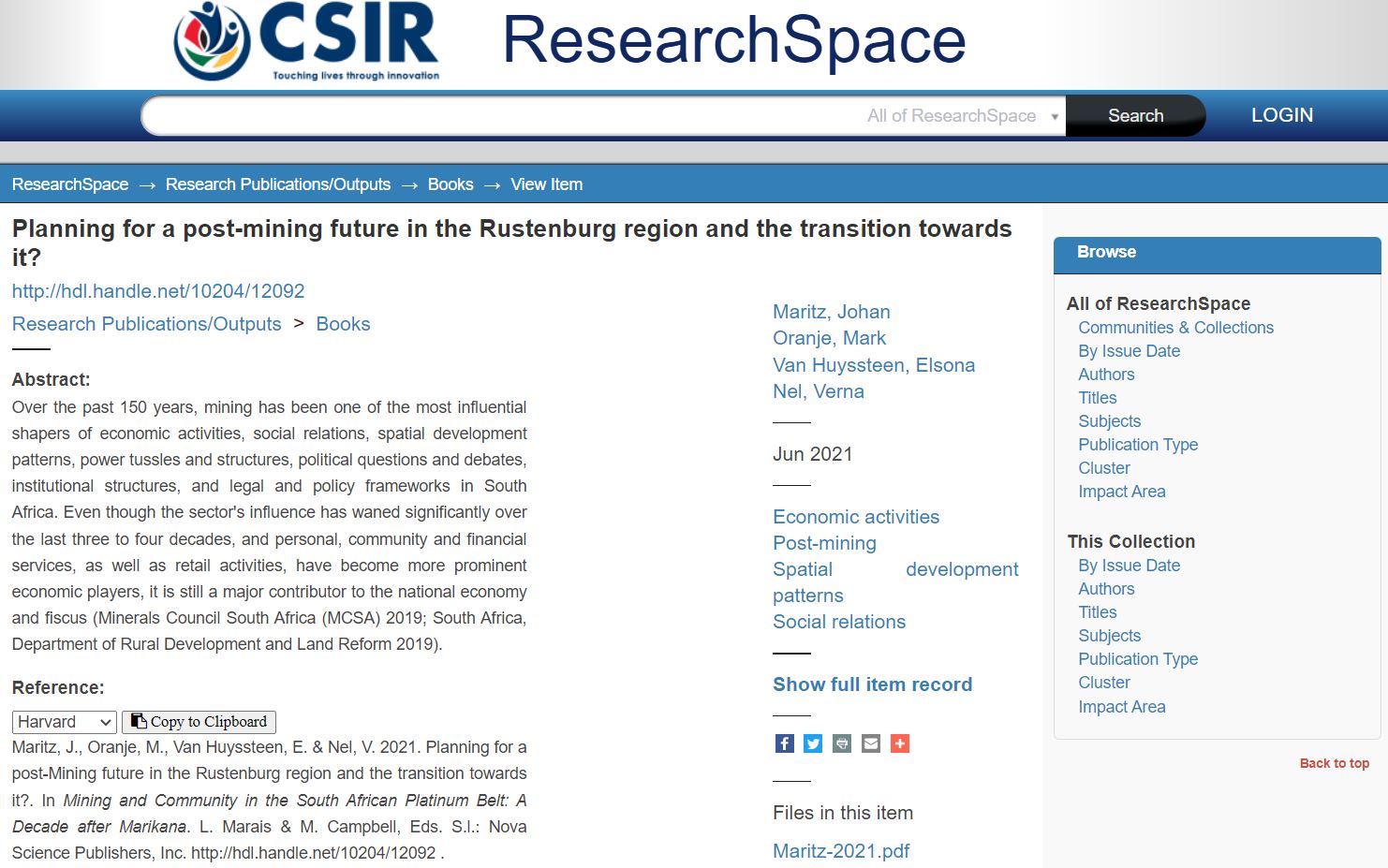Planning for a post-mining future in the Rustenburg region and the transition towards it?

01 June 2021
South African Cities Network
English
uKESA Librarian 2, Mining Towns Librarian
Book chapter
Municipal Capability & Partnership Programme
Africa
Over the past 150 years, mining has been one of the most influential shapers of economic activities, social relations, spatial development patterns, power tussles and structures, political questions and debates, institutional structures, and legal and policy frameworks in South Africa. Even though the sector's influence has waned significantly over the last three to four decades, and personal, community and financial services, as well as retail activities, have become more prominent economic players, it is still a major contributor to the national economy and fiscus.
A growing body of work in South Africa has explored the fortunes of mining towns and regions in remote, geographically isolated and climatically harsh parts of the country. Their origins lie in the advent of mining activities in the area, or with very small-scale and limited economic activities before the mining era began, notably so in the Northern Cape and the Free. Additionally, research into mining regions has been taken further through the 67 work by researchers at the University of the Free State and associates into the coal mining town of Emalahleni and surrounding areas. This was followed by research into the western limb of the platinum belt led by a team from the Council for Scientific and Industrial Research, commissioned by the South African Local Government Association.
This chapter builds on that research by considering the Rustenburg region and the future of the Platinum Group Metals (PGMs) that potentially have more of a future and may even become key players in a “lower carbon world”. However, as this chapter will demonstrate, there seems to be a reluctance to acknowledge a future beyond PGMs and an unwillingness to collaboratively plan for such a future.
This resource is part of the Mining Towns Collection kindly sponsored by the Municipal Capability and Partnership Programme. Abstract based on source.


Comments